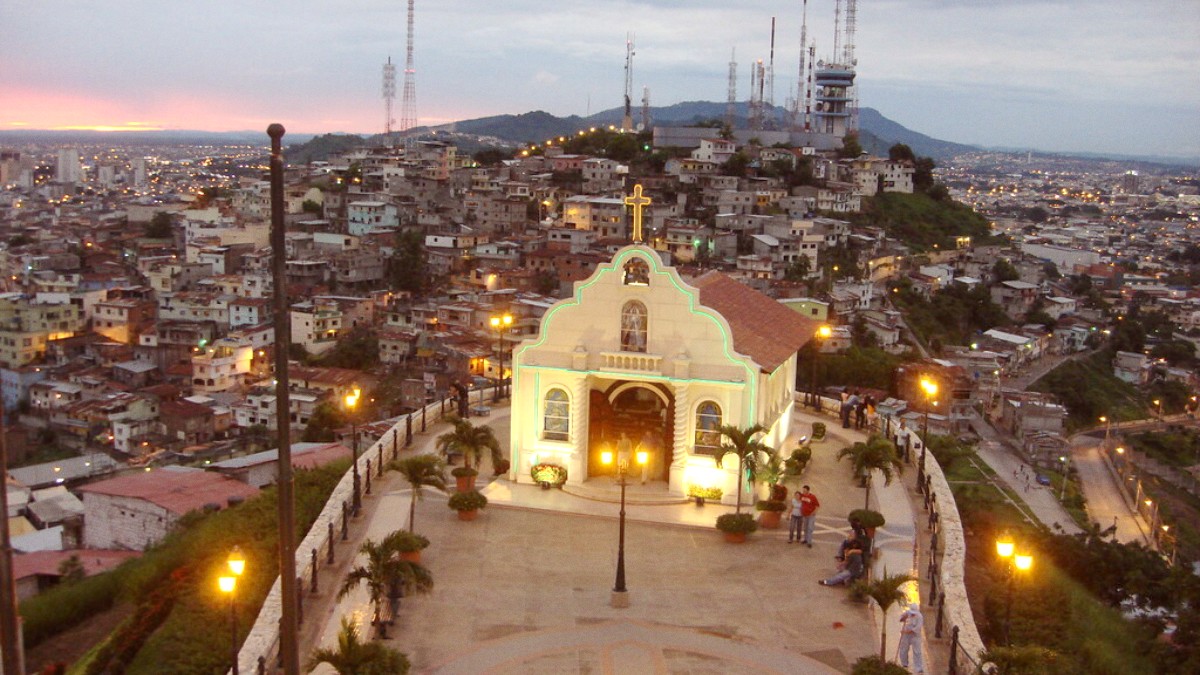
Pacific Coast And Lowlands, Ecuador
Engage with nature and seek thrills in and around Guayaquil.
Located 30-45 minutes from Guayaquil. This dry tropical forest reserve offers trails of varying difficulty. Birdwatching and howler monkey spotting are common.
A vast mangrove ecosystem about 1-1.5 hours south. Home to diverse birdlife and howler monkeys. Boat tours through the mangroves are available.
Parque de las Iguanas offers direct interaction with land iguanas. Parque Histórico Guayaquil features native wildlife in recreated habitats.
For outdoor activities outside the city, it is advisable to go with organized tours or experienced local guides.
Deepen your understanding of Ecuadorian culture through these experiences.
October 9. A major city-wide celebration with parades, civic ceremonies, and cultural events. A very lively time to be in the city.
July. Commemorates the city's founding. These celebrations feature various civic and cultural events throughout the month.
Public decorations, nativity scenes, and the unique Ecuadorian tradition of burning effigies (años viejos) on New Year's Eve.
Community-based tourism initiatives are less common directly in the urban center of Guayaquil. Seek local guides for engagement.
Casa de la Cultura Ecuatoriana (Núcleo del Guayas) and Teatro Sánchez Aguilar are central venues for performances.
Public performances sometimes occur on the Malecon or in city squares, especially during holidays.
Find opportunities to unwind and rejuvenate in Guayaquil.
No hot springs are directly in Guayaquil. The closest well-known hot springs are in the Andean highlands (e.g., Baños de Agua Santa, Papallacta).
Several hotels have swimming pools accessible to guests. For beach clubs, a trip to Playas (General Villamil Beach) is necessary.
Enjoy relaxed walks or leisure time in parks like Malecon 2000 or Parque de la Kennedy.
The tropical climate of Guayaquil makes proper hydration important for overall well-being. Drink plenty of bottled water.
Protect yourself from the strong equatorial sun with sunscreen, hats, and sunglasses, especially during peak hours.
Fresh natural fruit juices are a delicious way to refresh and get vitamins. Try local fruits like passion fruit or naranjilla.
Guayaquil features a lively nightlife scene, specifically on weekends.
Areas like Urdesa Central and Samborondón are known for their concentration of bars and clubs. Venues play various music styles, from salsa to electronic music.
A historic nightlife district downtown. Some areas may require caution, especially late at night. Exercise awareness.
Urdesa and Samborondón are the main areas for bars and evening entertainment. Formal pub crawls for tourists are not widely organized.
From traditional Ecuadorian folk music to contemporary rock, jazz, and electronic dance music.
Some clubs and late-night restaurants remain open until the early morning hours, especially on weekends.
Casinos operate in major hotels, offering another late-night entertainment option.
Always use reputable taxis or ride-sharing services, notably when traveling at night. Avoid walking alone in unlit areas.
Discover local crafts, souvenirs, and modern shopping experiences.
Many artisans sell their goods directly at the Mercado Artesanal. Some small galleries in Las Peñas feature local artists.
Tagua nut jewelry and figurines, miniature replicas of landmarks, Ecuadorian chocolate and coffee, Panama hats (toquilla straw hats), hand-woven textiles.
Look for certified fair trade products, specifically for coffee and cacao. Support local artisans directly. Be wary of items made from endangered species.
For unique, authentic gifts, prioritize the Mercado Artesanal over generic tourist shops. You often find better prices and a wider selection there.